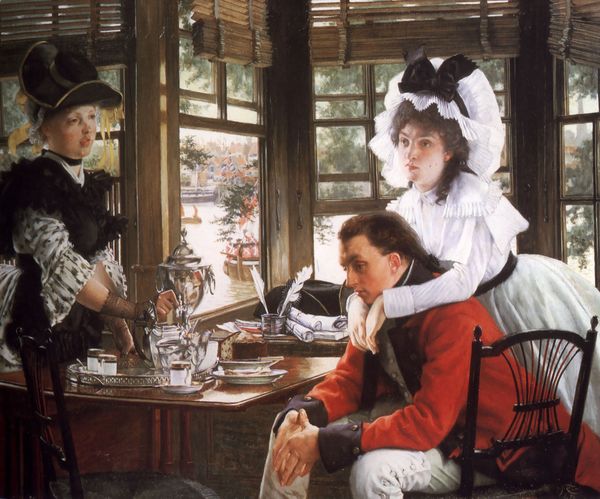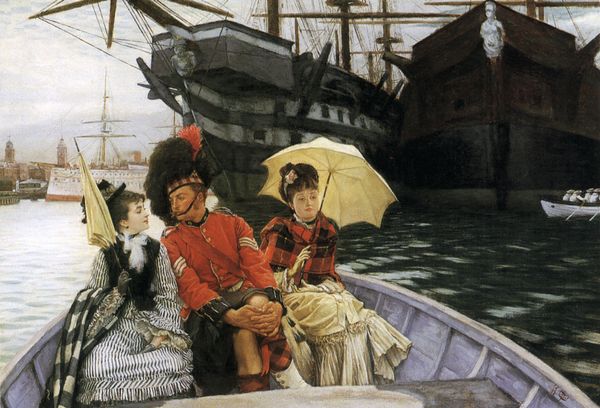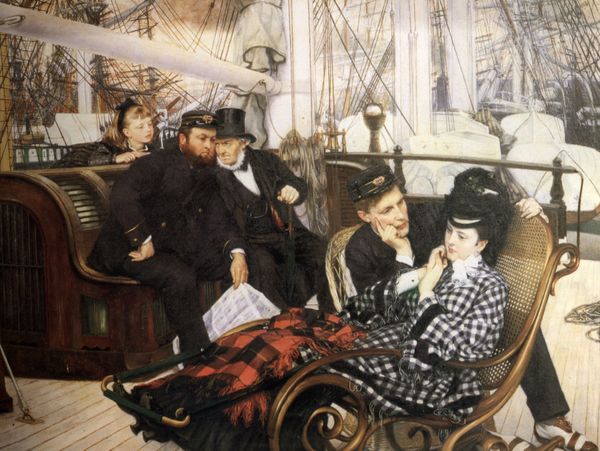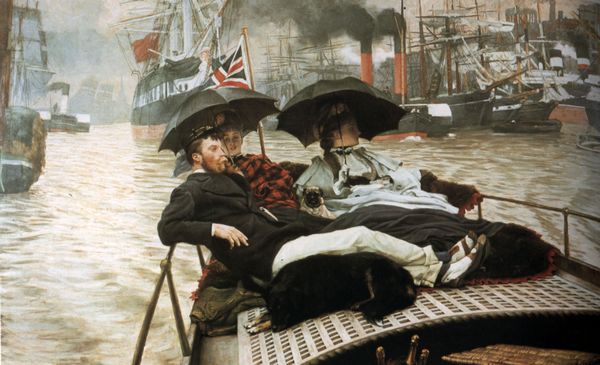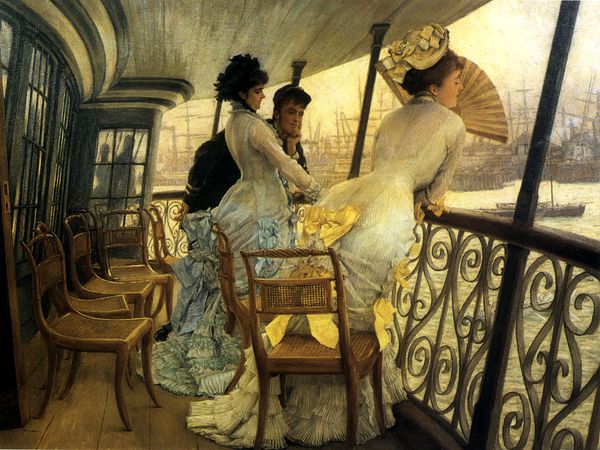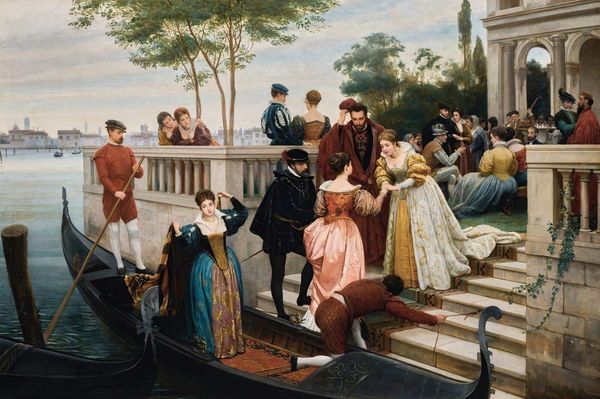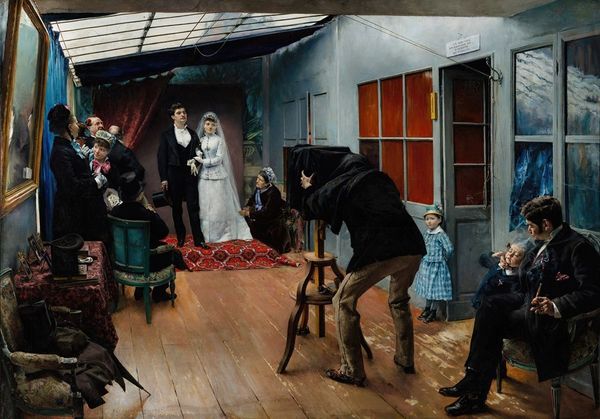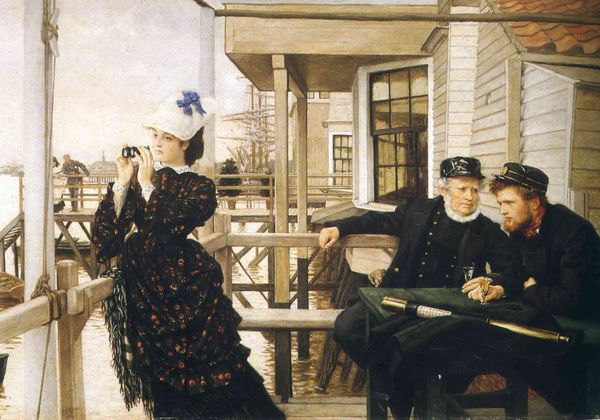
Dimensions: 76 x 53.5 cm
Copyright: Public domain
Editor: Here we have James Tissot's "The Captain and the Mate," painted in 1873 using oil paints. It strikes me as a snapshot of a moment, yet there's a stillness to the composition. What formal qualities jump out at you in this work? Curator: The composition is certainly intriguing. Note how Tissot uses the ship's rigging to create a complex network of lines that intersect and divide the pictorial space. These lines both flatten the image and lead the eye in various directions. Also observe how the limited color palette enhances the atmospheric perspective, creating depth and a sense of the hazy conditions one might experience at sea. Editor: That’s interesting about the lines—I hadn’t thought of that flattening effect. Do you think the way the figures are arranged contributes to the sense of spatial ambiguity? Curator: Precisely. The placement of the figures, particularly the foreground group with the woman in black and white, partially obscures the ship behind them. This placement also brings their intricate garments into sharper focus. And what about the tonal balance? Consider the contrasting dark and light areas – the black attire against the muted ship deck – creating visual interest and guiding the eye. Editor: So, would you say the artist's strategic organization of formal elements invites closer looking beyond any narrative interpretation? Curator: Indeed. While the implied social dynamic is palpable, it is ultimately the orchestration of line, form, color, and space that provides the aesthetic impact. The relationship between the forms defines its pictorial logic, irrespective of the representational reality. Editor: I see your point. Focusing on the composition alone provides a rich experience of the painting. Thanks! Curator: My pleasure. Examining the elements first helps unpack hidden subtleties of artistic intent.
Comments
No comments
Be the first to comment and join the conversation on the ultimate creative platform.


